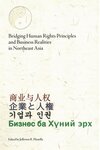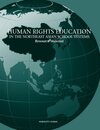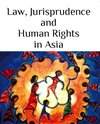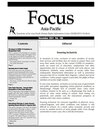Sardar Sarovar Dam was constructed on Narmada river that run in four States (Gujarat, Madhya Pradesh, Maharashtra and Rajasthan) in India starting in 1987. In April 1994, Narmada Bachao Andolan filed a writ petition inter alia praying that the Union of India and other respondents should be restrained from proceeding with the construction of the dam and they should be ordered to open the aforesaid sluices. Narmada Bachao Andolan cited displacement and rehabilitation problem that the project would cause. It called for further study as well as postponement of construction pending completion of such study. It has also argued for reduction in the height of the dam so as to reduce the extent of submergence and the consequent displacement.
The court discussed the petitioner's argument:
the forcible displacement of tribals and other marginal farmers from their land and other sources of livelihood for a project which was not in the national or public interest was a violation of their fundamental rights under Article 21 of the Constitution of India read with ILO Convention 107 to which India is a signatory. Elaborating this contention, it was submitted that this Court had held in a large number of cases that international treaties and covenants could be read into the domestic law of the country and could be used by the courts to elucidate the interpretation of fundamental rights guaranteed by the Constitution. Reliance in support of this contention was placed on Gramaphone Co. of India Ltd. Vs. B.B. Pandey, 1984(2) SCC 534, PUCL Vs. Union of India, 1997(3) SCC 433 and CERC Vs. Union of India, 1995(3) SCC 42. In this connection, our attention was drawn to the ILO Convention 107 which stipulated that tribal populations shall not be removed from their lands without their free consent from their habitual territories except in accordance with national laws and regulations for reasons relating to national security or in the interest of national economic development. It was further stated that the said Convention provided that in such cases where removal of this population is necessary as an exceptional measure, they shall be provided with lands of quality at least equal to that of lands previously occupied by them, suitable to provide for their present needs and future development.
The court however decided to allow the project to be completed. Among other discussions it ruled the following:
While protecting the rights of the people from being violated in any manner utmost care has to be taken that the Court does not transgress its jurisdiction. There is in our Constitutional frame-work a fairly clear demarcation of powers. The Court has come down heavily whenever the executive has sought to impinge upon the Courts jurisdiction.
At the same time, in exercise of its enormous power the Court should not be called upon or undertake governmental duties or functions. The Courts cannot run the Government nor the administration indulge in abuse or non-use of power and get away with it. The essence of judicial review is a constitutional fundamental. The role of the higher judiciary under the constitution casts on it a great obligation as the sentinel to defend the values of the constitution and rights of Indians. The courts must, therefore, act within their judicially permissible limitations to uphold the rule of law and harness their power in public interest. It is precisely for this reason that it has been consistently held by this Court that in matters of policy the Court will not interfere. When there is a valid law requiring the Government to act in a particular manner the Court ought not to, without striking down the law, give any direction which is not in accordance with law. In other words the Court itself is not above the law.
https://main.sci.gov.in/jonew/judis/17165.pdf







